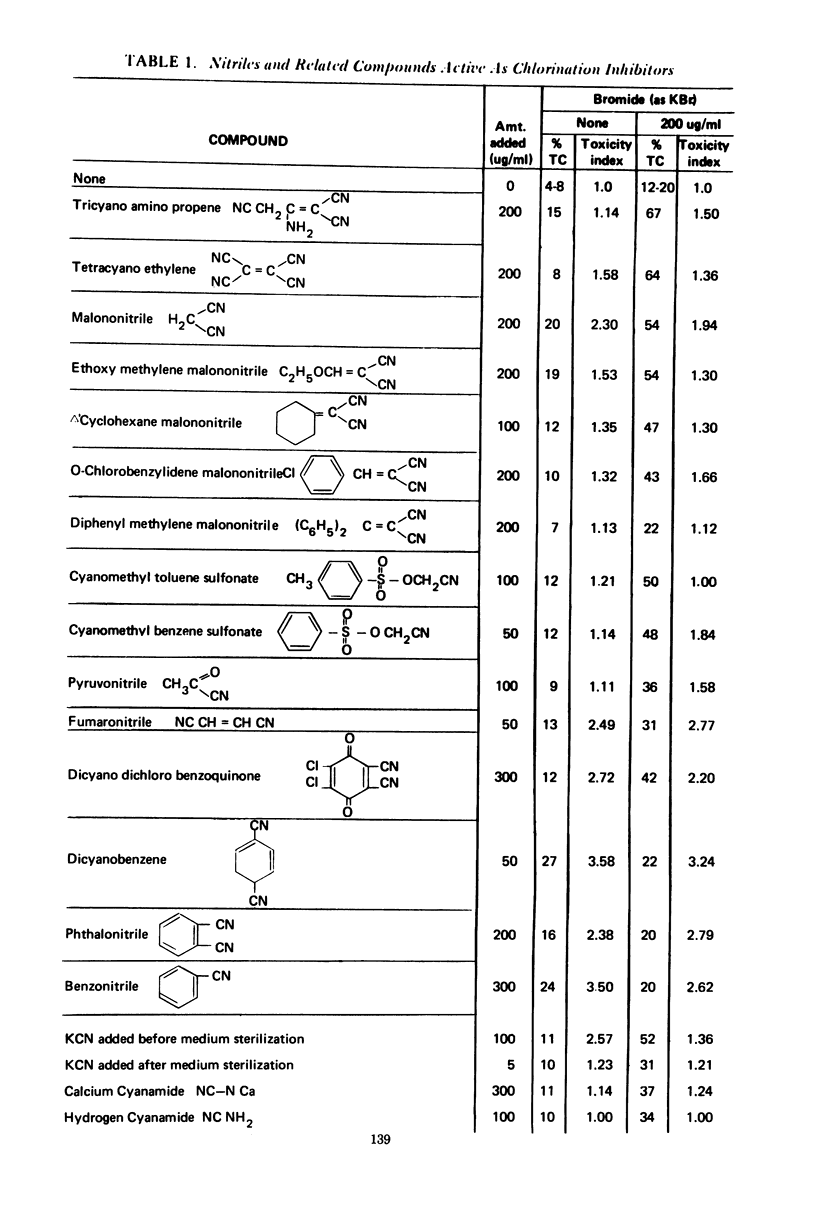Abstract
A number of nitriles and cyano compounds inhibited chlorination by Streptomyces aureofaciens. In most cases, this inhibition was enhanced by bromide. Methylene blue and p-amino-propiophenone reversed the inhibition to some extent.
Full text
PDF


Selected References
These references are in PubMed. This may not be the complete list of references from this article.
- GOODMAN J. J., MATRISHIN M., YOUNG R. W., McCORMICK J. R. Inhibition of the incorporating of chloride into the tetracycline molecule. J Bacteriol. 1959 Oct;78:492–499. doi: 10.1128/jb.78.4.492-499.1959. [DOI] [PMC free article] [PubMed] [Google Scholar]
- Goodman J. J., Matrishin M. Chlorination inhibitors in Streptomyces aureofaciens. Nature. 1968 Jul 20;219(5151):291–292. doi: 10.1038/219291a0. [DOI] [PubMed] [Google Scholar]
- INGBAR S. H. The action of 1,1,3-tricyano-2-amino-1-propene (U-9189) on the thyroid gland of the rat and its effects in human thyrotoxicosis. J Clin Endocrinol Metab. 1961 Feb;21:128–139. doi: 10.1210/jcem-21-2-128. [DOI] [PubMed] [Google Scholar]
- Morris D. R., Hager L. P. Mechanism of the inhibition of enzymatic halogenation by antithyroid agents. J Biol Chem. 1966 Aug 10;241(15):3582–3589. [PubMed] [Google Scholar]


